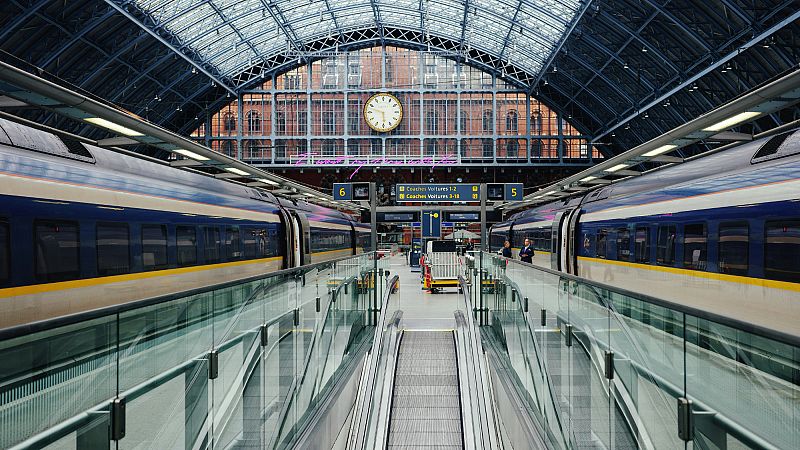Eurostar Introduces Earlier Boarding to Alleviate Crowding at St Pancras Station
Eurostar, the cross-channel train service connecting the UK with mainland Europe, has introduced a new measure to help manage the increasing number of passengers using London’s St Pancras International station. The initiative allows travelers to board their trains 30 minutes before departure, rather than waiting in the departure lounge. This change is part of a broader strategy aimed at addressing overcrowding and improving the overall passenger experience.
The decision comes as international rail travel continues to grow in popularity, with significant increases in demand expected over the coming years. St Pancras station has already seen record numbers this year, with two of its busiest weeks recorded so far. In the first half of the year alone, passenger numbers from the station have risen by 4.23% compared to the same period last year, adding approximately 101,000 travelers between January and June.
Addressing the Challenges of Growing Demand
Despite the success of Eurostar and the increased usage of St Pancras, the historic station faces challenges due to its limited space. Long queues for check-in, security, and border checks have become common, with the departure lounge often overcrowded to the point where only standing room is available. To tackle these issues, Eurostar and the station management have implemented a three-stage plan to increase capacity and improve efficiency.
One key element of this plan is the earlier boarding policy, which aims to reduce congestion during peak times. By allowing passengers to take their seats ahead of time, the station hopes to ease the pressure on the departure lounge and streamline the boarding process.
Preparing for the Future of International Travel
The expansion of capacity at St Pancras is also driven by projections that international rail travel will triple by 2040. Currently, the station handles around 11 million passengers annually, but this number is expected to rise to 35 million. To meet this demand, both Eurostar and the station are working to enhance infrastructure and services to match the standards of major airports like Heathrow Terminal 5.
Richard Thorp, chief operating officer of London St Pancras High Speed, emphasized the commitment to creating an exceptional travel experience for passengers. “St Pancras and Eurostar at the highest level are absolutely committed to creating space at St Pancras that is absolutely amazing for the travelling public,” he said.
The goal is to boost the hourly passenger throughput from 1,800 people last year to up to 5,000 per hour in the coming years. This will involve not only expanding physical space but also improving processes and technology to support the growing number of travelers.
Adapting to New Border Control Systems
In addition to managing passenger flow, Eurostar is preparing for the implementation of the EU’s new Entry/Exit System (EES) in October 2024. This electronic system will replace traditional passport stamping at border checkpoints, requiring new scanning technology and updated procedures.
To accommodate the EES, Eurostar plans to double the number of border staff and manual booths. However, there is limited space for the additional kiosks, which will increase from 24 to 49. These will be placed in different areas of the station, including locations currently used by domestic rail operators and the HS1 high-speed line.
Eurostar has also assured passengers that trained staff will be available at all new booths to assist with the transition. The EES will be followed by the European Travel Information and Authorisation System (ETIAS) in late 2026, which will require British and non-EU travelers to pre-register and pay a fee before crossing the Channel.
Looking Ahead: Enhancing the Passenger Experience
As the demand for international rail travel continues to grow, St Pancras and Eurostar are taking proactive steps to ensure the station remains a competitive and efficient hub. From earlier boarding to improved border control systems, these changes aim to create a smoother, more enjoyable journey for passengers traveling between the UK and Europe.







